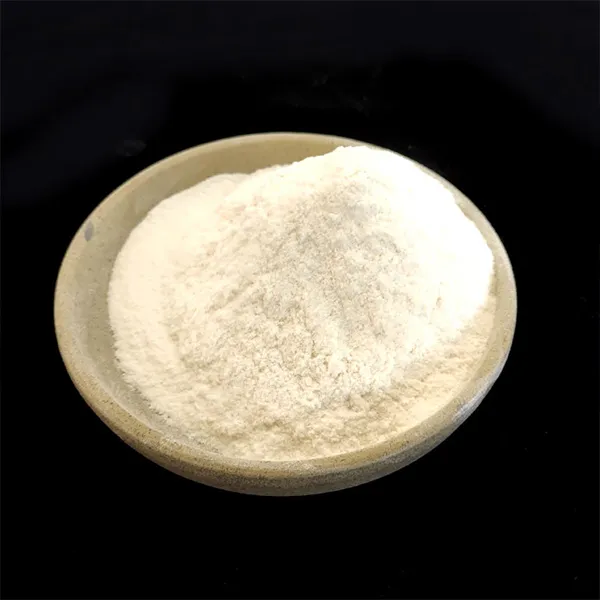Exploring the Benefits and Applications of Cellulose and HPMC
Cellulose is one of the most abundant organic polymers on Earth, derived primarily from the cell walls of plants. It is an essential component of dietary fiber and has numerous applications across various industries, from food to pharmaceuticals. Within the realm of cellulose derivatives, Hydroxypropyl Methylcellulose (HPMC) stands out as a versatile compound with a broad spectrum of uses, particularly in the fields of construction, food science, and medicine.
What is HPMC?
HPMC is a semi-synthetic polymer derived from cellulose, modified to improve its properties. The hydroxyl (OH) and methoxy (OCH3) groups introduced during the modification process impart unique characteristics to HPMC, including water solubility, thickening, and film-forming abilities. These traits make HPMC an attractive ingredient for a variety of applications.
Applications in Construction
One of the prominent applications of HPMC is in the construction industry. It is often used as an additive in cement, mortars, and plaster. The inclusion of HPMC enhances the workability of these materials, allowing for smoother application and improved adhesion to surfaces. Moreover, HPMC contributes to the water retention capacity of the mixtures, which is vital for hydration and curing processes, ensuring better performance and durability of construction materials.
In tiling applications, HPMC serves as an essential component in tile adhesives. It provides the necessary viscosity and allows for better open time, which is crucial when positioning tiles. The ability of HPMC to maintain moisture within the adhesive ensures that tiles set properly, reducing the risk of damage.
HPMC in the Food Industry
The food industry also benefits significantly from HPMC's unique properties. It is widely utilized as a thickening agent, emulsifier, and stabilizer in a variety of food products. For example, HPMC is commonly found in sauces, dressings, and baked goods where it helps to improve texture and consistency. Its ability to retain moisture makes it particularly useful in products like bread, where it aids in extending shelf life without compromising quality.
celulose hpmc

HPMC is often favored for its plant-based nature, making it an appealing choice for vegetarian and vegan products. Additionally, its status as a Generally Recognized As Safe (GRAS) substance further enhances its acceptability within the food sector. As the demand for plant-based and clean-label products continues to rise, HPMC's role is likely to expand.
Pharmaceutical Applications
In the pharmaceutical industry, HPMC is a crucial ingredient in the formulation of controlled-release drug delivery systems. Its hydrophilic nature allows it to form gels in the presence of water, which can modulate the release of active pharmaceutical ingredients (APIs). This quality is particularly beneficial in developing medications that require precise dosing over extended periods.
Furthermore, HPMC is frequently used as a binding agent in tablets and capsules, aiding in the manufacturing process and ensuring that medications maintain their efficacy throughout their shelf life. Its use in pharmaceutical formulations emphasizes the importance of cellulose derivatives in improving patient compliance through better medication delivery.
Environmental Considerations
As a biodegradable polymer, HPMC presents an environmentally friendly alternative compared to synthetic additives. Its natural origin, combined with its biodegradability, aligns with the growing emphasis on sustainable practices across industries. By choosing HPMC over petroleum-based substitutes, manufacturers can reduce their ecological footprint and appeal to environmentally conscious consumers.
Conclusion
Cellulose and its derivatives, particularly Hydroxypropyl Methylcellulose (HPMC), illustrate the diverse applications and benefits these natural compounds offer. From enhancing construction materials to improving food products and enabling advanced pharmaceutical formulations, HPMC is a multipurpose ingredient that plays a vital role in modern industry. As interest in sustainable and natural products continues to rise, the importance of HPMC and cellulose is likely to grow, driving further innovation and application in various fields. Whether it's improving our buildings, our food, or our health, HPMC stands testament to the remarkable potential of cellulose as a life-enhancing resource.
-
A Comprehensive Guide to Methyl Ethyl Hydroxyethyl Cellulose: Applications and Industry InsightsNewsNov.24,2025
-
Understanding Methyl 2 Hydroxyethyl Cellulose: Uses, Benefits & Industry InsightsNewsNov.24,2025
-
Hydroxyethyl Methyl Cellulose HEMC: Industrial Uses, Benefits & Future TrendsNewsNov.23,2025
-
HEMC Cellulose: Versatile & Sustainable Industrial Polymer | YoungcelNewsNov.23,2025
-
Methyl Hydroxyethyl Cellulose: Versatile Building Block for Industry & SustainabilityNewsNov.23,2025
-
CAS 9032 42 2: Understanding Polyvinyl Alcohol's Impact on Industry & SustainabilityNewsNov.22,2025




